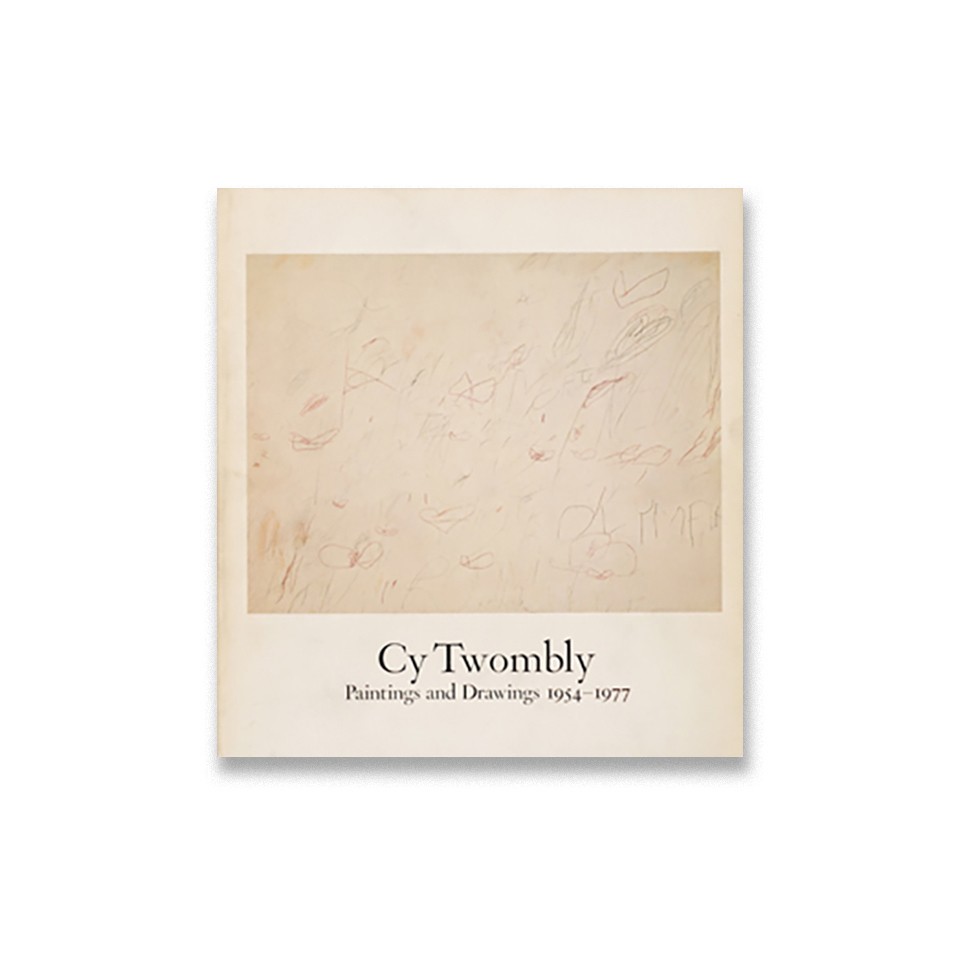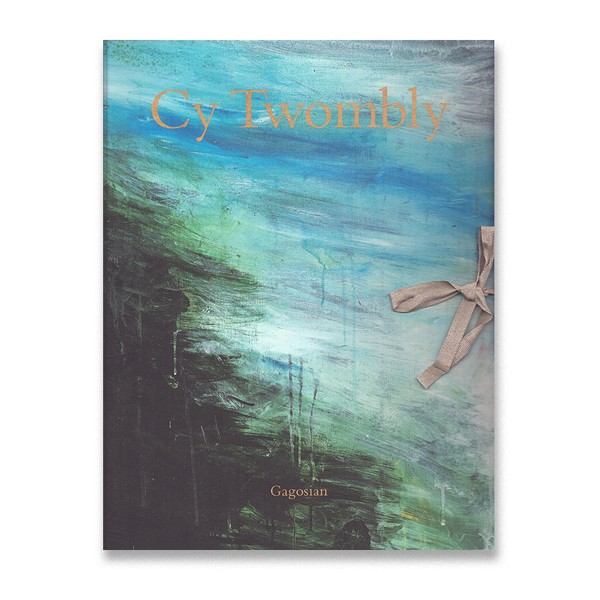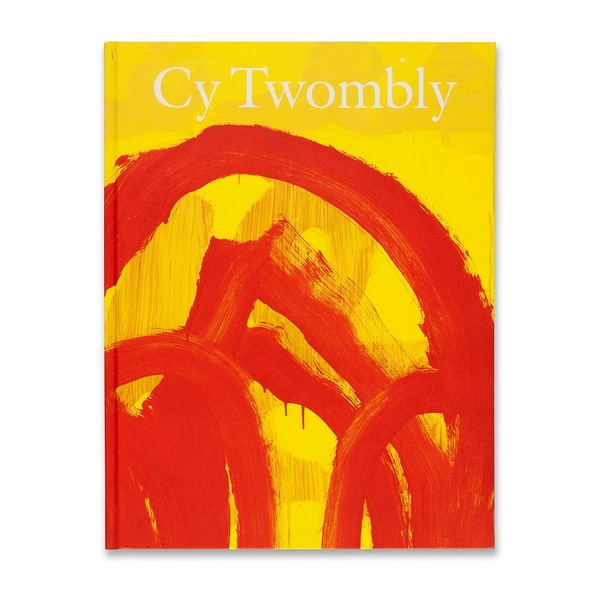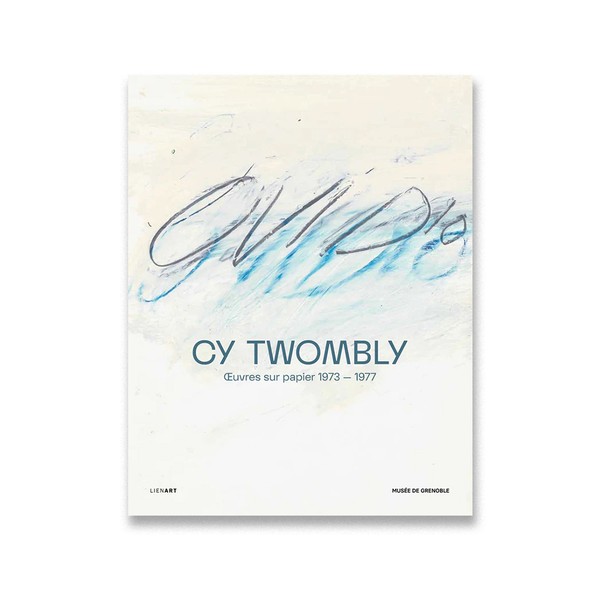Cy Twombly
Paintings and Drawings 1954–1977

This exhibition catalogue was published on the occasion of Twombly’s midcareer retrospective at the Whitney Museum of American Art; Roland Barthes’s foundational essay on the artist, “The Wisdom of Art,” was commissioned for this publication. The catalogue includes Tom Armstrong’s “Director’s Foreword,” Barthes’s essay, plates of paintings and drawings, a chronology by Heiner Bastian, a bibliography by David White, and a catalogue of works exhibited. Barthes’s essay is printed in French and English.
Barthes centers his essay on “consider[ing] Twombly in his relation to what constitutes an Event,” asserting that “what happens is a fact (pragma), a coincidence (tyché), an outcome (telos), a surprise (apodeston), and an action (drama)” (9). Each section focuses on one of these classifications in turn. In terms of pragma, Barthes identifies scratching, smudging, smearing as the “gestures through which Twombly enunciates” (10). This section includes two deeply influential and frequently cited passages from Barthes: first, “Doesn’t the schoolboy learn the essence of a table by copying its name laboriously? By writing Virgil on his canvas, it is as if Twombly was condensing in his hand the very immensity of Virgil’s world…” and second, “If a canvas is called The Italians, do not seek the Italians anywhere, except, precisely, in their name. Twombly knows that the Name has an absolute (and sufficient) power of evocation: to write The Italians is to see all the Italians” (both 11). To tyché, Barthes assigns the movements of throwing (“jeté”) and the “appearance of dispersion” (12). With telos, Barthes asserts that “what Twombly’s paintings produce (their telos) is very simple: it is an ‘effect’” (15). Turning to apodeston, Barthes writes that “[t]his surprise takes the appearance of incongruity, derision, deflation, as if the humanist turgescence was suddenly pricked” (17). Drama, for Barthes, takes the form of “a kind of representation of culture” (19), and notes that “suddenly there arises something new, a desire: that of doing the same thing; of going to another worktable (no longer that for writing), to choose colors, to paint and draw. In fact, the question of painting is: ‘Do you feel like imitating Twombly?’” (21).
Though this catalogue is out of print, Barthes’s essay is readily available in other volumes, including Roland Barthes, Cy Twombly. Scholars interested in this volume may also consult other major catalogues and monographs, such as: Mary Jacobus’s Reading Cy Twombly: Poetry in Paint (2016); Thierry Greub’s Inscriptions (2022); Cy Twombly: A Retrospective, ed. Kirk Varnedoe (1994); Cy Twombly: Œuvres sur papier 1973–1977, Musée de Grenoble (2023); and Cy Twombly: Making Past Present, eds. Christine Kondoleon and Kate Nesin (2020).
(Publication description by Jamie Danis)
This catalogue was published on the occasion of the retrospective Cy Twombly. Paintings and Drawings 1954–1977 at the Whitney Museum of American Art, New York (April 10–June 10, 1979).
Cy Twombly. Paintings and Drawings 1954–1977. Text by Roland Barthes, “Sagesse de l’art/ The Wisdom of Art.” Whitney Museum of American Art, New York, 1979. English/French edition.



